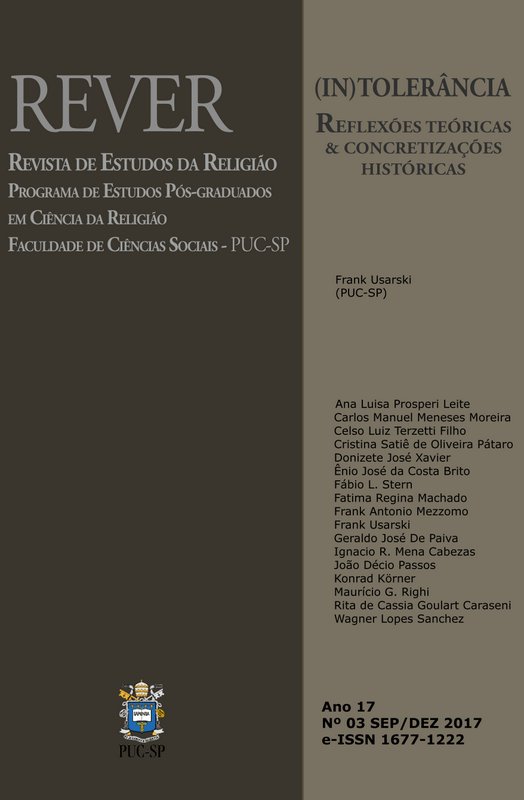The rhetoric of nihilation – reflections upon the campaign against Spritism in Brazil between 1890 and 1940
DOI:
https://doi.org/10.23925/1677-1222.2017vol17i3a6Keywords:
rethoric nihilation, religious intolerance, Kardecism, BrazilAbstract
The rhetorical strategy of “nihilation” is a decisive means for manifesting religious intolerance. According to Peter L. Berger and Thomas Luckmann it is the attempt of an instance, which represents the social majority to attribute an inferior status to a religious minority. To be effective, the technique requires the capacity of a social actor of influencing the public image of the phenomenon in question in a way that a public interest in the campaign becomes obvious. The success of this process of social construction of reality depends on a twofold linguistic talent of the “constructor”. The first faculty is to reduce the complexity of the challenging phenomenon to asserted “core elements”. The second one is to associate these “core elements” to pre-established negative definitions so that the “enemy” appears as a mere variant of a well-known inacceptable social phenomenon. In order to illustrate how and why the strategy of nihilation works, this article refers to the campaign against Kardecism driven by Brazilian authorities between 1890 and 1940.
Downloads
Published
How to Cite
Issue
Section
License
Authors who publish in this journal agree with the following terms:- Authors retain copyright, but grant the journal the right of first publication, with the work simultaneously licensed under the Creative Commons BY-NC License.
- Authors are authorized to assume additional contracts separately, for non-exclusive distribution of the work published in this journal (e.g., publishing in an institutional repository or as a book chapter), as long as with acknowledgment of authorship and first publication in this journal.


